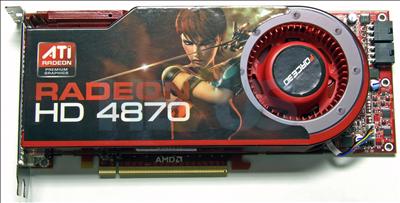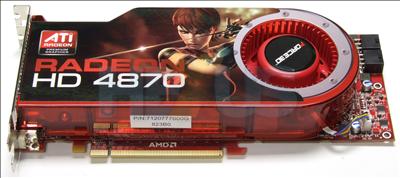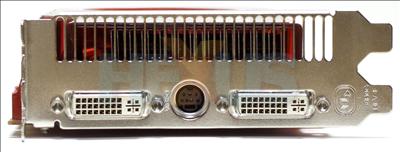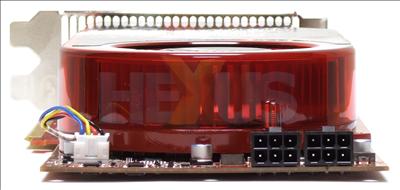Card appearance
Please head back to our in-depth architecture look if you need to familiarise yourself with what makes the technology tick along.The Force3D HD 4870 is based on the reference design, with standard clocks of 750MHz for the core and shaders, and 3,600MHz (effective) memory. That speed is achieved by using new-fangled GDDR5 memory, and it has been introduced on this particular SKU.
Force3D packs the card with a standard 512MB frame-bufer, with the eight memory chips all located on the topside.
The rear of the card is also pure reference, and it will be a short while before partners delve into the world of in-house-designed models.
The Radeon HD 4870's dual-slot cooler sacrifices cooling performance for low-noise, with the fan speeds not spinning up to full speed, keeping the GPU somewhat toasty under both idle and load conditions.
Two dual-link DVI connections, with HDMI pass-through for video and 7.1-channel multi-channel audio, as well as a TV-out connector provide your A/V options.
Two six-pin power connectors are required to feed this high-performance card, though, and it will consume around 160W when under load.














